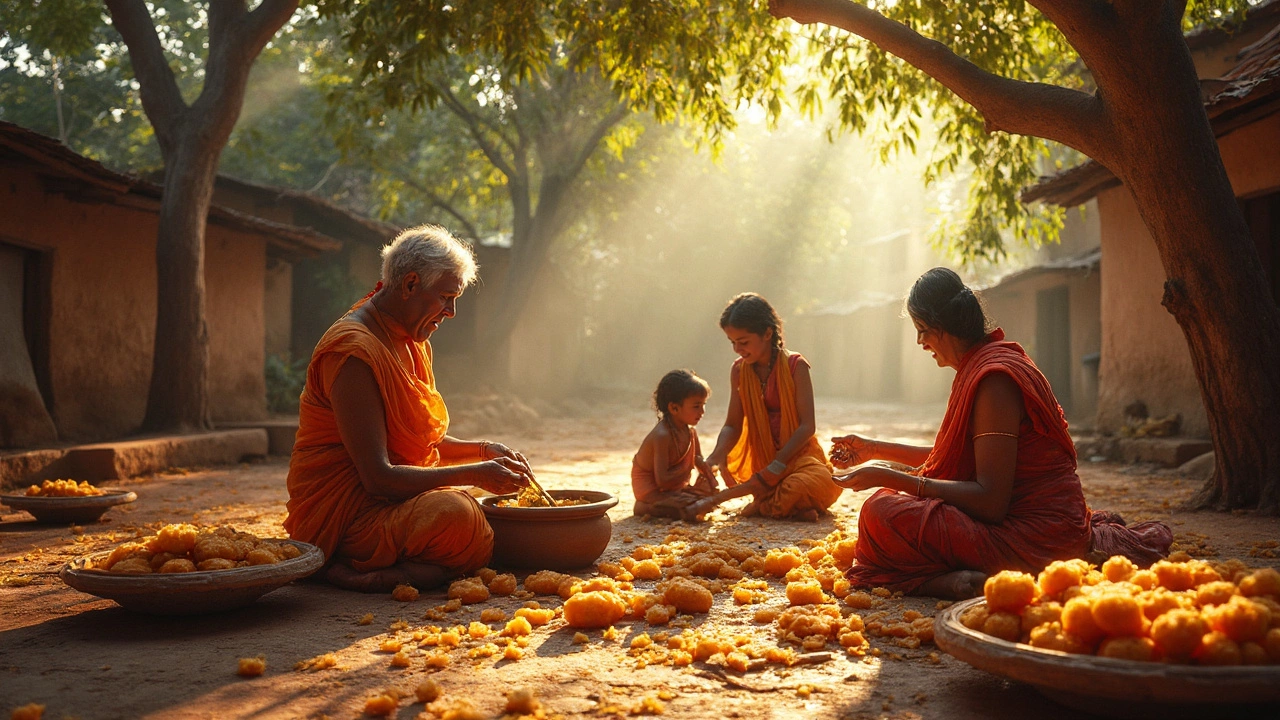Traditional Sweets: Classic Indian Desserts You Can Make at Home
Indian traditional sweets, or mithai, are more than just desserts – they’re a part of festivals, family gatherings, and everyday life. From the syrup‑soaked gulab jamun to the crisp, buttery baklava‑style jalebi, each sweet has a story that links generations. If you’ve ever wondered how to bring those flavors to your kitchen without a fancy pantry, you’re in the right place.
Why Traditional Sweets Matter
These sweets survive because they use simple, locally‑sourced ingredients: milk, jaggery, ghee, and regional spices. The techniques have been handed down for centuries, so you get a taste of history with every bite. For example, the oldest known Indian sweet, peda from the Mughal era, still follows the same reduction process used today. Understanding the background helps you appreciate why a pinch of cardamom can change the whole experience.
Healthier Twists Without Losing Flavor
Traditional sweets get a bad rap for being too sugary, but clever swaps keep the taste while cutting the guilt. Replace refined sugar with jaggery or coconut sugar for a deeper, caramel note and a lower glycemic impact. Use low‑fat milk or almond milk in milk‑based sweets like kheer to trim calories without sacrificing creaminess. A little extra ghee can be swapped for a mix of ghee and olive oil, giving you the rich texture but with healthier fats.
Portion control is another simple trick. Instead of serving a huge laddu, shape smaller bite‑size balls and place them on a decorative plate. That way, you get the festive look and can enjoy a few pieces without overdoing it.
Now let’s look at a few crowd‑pleasers you can try this weekend.
Gulab Jamun: Classic, soft dough balls soaked in rose‑scented syrup. For a lighter version, bake the balls instead of deep‑frying and soak them in a reduced‑sugar syrup. Use a mix of whole‑milk powder and a tablespoon of whole‑wheat flour to keep the texture airy.
Mysore Pak: This butter‑heavy treat from Karnataka shines with ghee and chickpea flour. Cut the ghee in half and add a spoonful of ground almonds – you keep the melt‑in‑your‑mouth feel while adding protein and a nutty aroma.
Laddu: Whether it’s besan (gram flour) or coconut, laddus are easy to shape. Toast the flour slowly, then bind with a blend of honey and a dash of jaggery. The honey gives natural sweetness, and the jaggery adds that deep, earthy flavor.Want something truly ancient? Try Rasagulla, a spongy cheese ball soaked in light syrup. Make it with paneer that’s been pressed overnight – the drier cheese holds its shape better, and you can sweeten the syrup with a hint of saffron for a royal touch.
Quick tip: always let your sweets rest for at least 30 minutes after cooking. This lets the flavors meld and the texture set, so each bite feels consistent.
Whether you’re preparing sweets for Diwali, a birthday, or just a weekend treat, the key is to respect the base technique and then experiment with healthier ingredients. The result is a dessert that feels authentic, tastes amazing, and fits better into a balanced diet.
So grab your spatula, measure out that jaggery, and start creating your own traditional sweets collection. You’ll soon have a spread that impresses guests and keeps your cravings in check.
Oldest Candy in India: Tracing the Sweet Roots of Indian Sweets
Ever wondered what counts as the oldest candy in India? This article digs into the ancient roots of Indian sweets, spotlighting jaggery-based treats and early sugarcraft. It unearths the story behind legendary sweets, explores why they've survived for centuries, and breaks down how these early candies were made at home. Expect taste, nostalgia, and a few surprising facts about India’s enduring sweet traditions.
